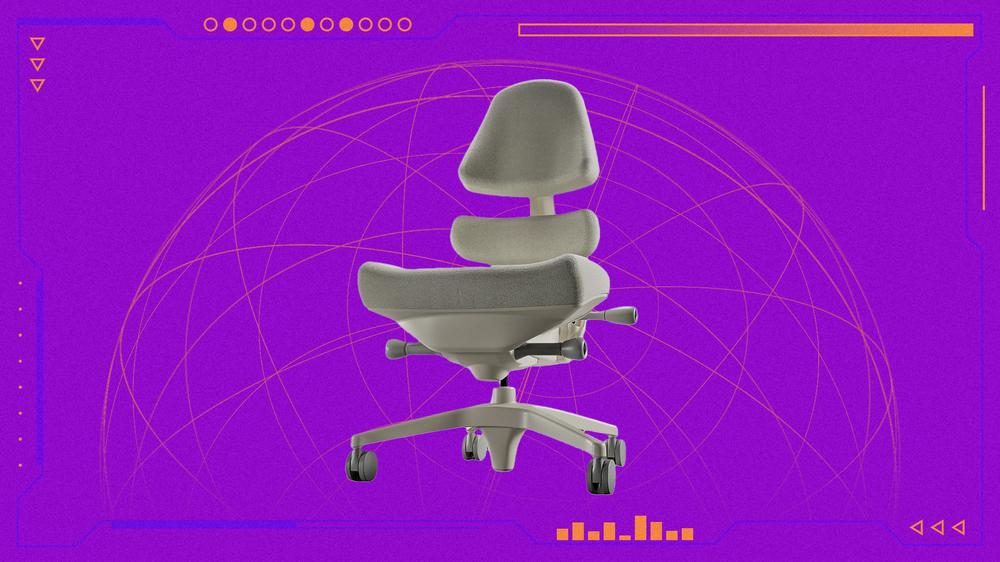If your day involves spending hours at a desk, having a great chair may be more important than you realize. Office chairs come in a range of styles and price points, but the very best allow you to sit in comfort with proper support to ensure that when your day is done, you can go on with your day pain-free. With so many to choose from, nearly all claiming to offer an end to back pain, how do you choose which brands are being truthful and which simply hope to make a sale?
That’s where I come in. Whether you’re looking something to elevate your workday or to play games all weekend without paying for it on Monday, I have the best picks to enhance your comfort, decrease neck and back pain, and protect your health.
TL;DR – These Are the Best Office Chairs:
A great chair is determined by many factors, from features to materials to even subtle contours and seemingly small adjustments. For breathability, mesh chairs are a great choice, followed by those with fabric upholstery. For easy cleaning and that luxury touch, a chair with leather might be a better fit.
No matter what you choose, if you're going to be sitting for more than an hour or two at a time, you should always look for visible lumbar or pelvic support, whether that's with an individual piece such as a Dynamic Variable Lumbar (DVL) or just a noticeable contour that aligns with the spine. The chair's adjustability is also important to make sure that it can be tailored for your body's specific needs.
How to Choose the Right Office Chair for You
"If it fits, I sits" might be a great motto for a cat, but it doesn't work for human beings. If you're on the hunt for your next office chair upgrade, these are the factors you should consider, in order of importance:
Price
Decide on the budget you're willing to allow for your new chair. It's possible to get a basic computer chair for well under $100, but it's also true that you get what you pay for in this category.
These very low-cost chairs often feature thin padding and construction that's not made to last. Fake leather will begin to crack and peel, and fabric will pill, fray, and tear – often sooner than later when you cut corners on a piece of furniture you'll be using regularly every day.
If you don't mind replacing the chair every year or two, this might not matter. However, if you're looking for something that will last years into the future and offer you proper support so you can go on with your day pain free, you should plan on spending $200 to $300 at minimum.
The very best chairs often cost hundreds of dollars, if not a bit over $1,000. These chairs are robustly made, are usually very ergonomic and adjustable, and frequently feature warranties of at least a decade.
No matter where you fall, you should consider your chair an investment. If you'll be using it for work, it can enhance your productivity by improving your focus and concentration. Even more important than that, it's an investment in your quality of life and long-term health, and that's worth paying for. I advise taking the upfront cost and dividing that by the warranty term to determine your true per-year cost, and deciding if it's worthwhile based upon that.
Size (including the backrest) and Capacity
Next, consider the size of the chair you need. While it might seem strange to look to the dimensions before ergonomics, my experience tells me that this can be one of the most important factors in the whole decision-making process.
Do you want a high-back chair with a headrest, or a more traditional office chair that goes up to your mid-back? Do you need it to hold 500lbs, or would 250 be enough? These factors are important in determining the type of chair that would be a fit for you, but don't stress over it. There are ergonomic options in every style.
Ergonomics and Adjustability
Finally, we come to ergonomics, but make no mistake: While the previous considerations pointed you in the right direction for the market you'll be shopping in, ergonomics and adjustability can be the key deciding factor.
In my experience, just about every brand says it offers fantastic support. This is not always true. Pay close attention to the backrest, and particularly the lower back, to see if there is an outward contour or an adjustment option to support your lumbar region (some chairs have an internal mechanism you'll need to adjust with a knob or lever).
Likewise, look for the ability to raise or lower this support or the backrest entirely, because our backs and bodies come in different sizes – we don't all need the lumbar support in the exact same place. Often, you can find a middle ground if it's not vertically adjustable due to the size of the contour. In general, you want as much adjustment in this area as possible.
Other ergonomic features and adjustments to look out for include:
Height: Your chair should be tall enough to comfortably use your keyboard with your knees at a 90-degree angle.
Tilt, Angle Lock, and Tilt Tension: Office chairs usually approach tilting differently than gaming chairs. It's not common to see a lever that allows the backrest itself to recline, as is typical in racing seats. Instead, the backrest, or even the whole chair, will tilt within a defined range.
Many chairs have a knob or lever that locks the chair at a certain angle that you find comfortable. This can be useful if you like to put your feet up or prefer “zero-gravity” seating. Some chairs allow you to lock the chair at any angle while others have set steps.
More important than angle locking, in my opinion, is the ability to adjust the tension of the chair's movement. This is how much resistance you feel when rocking backward. Too much resistance will make you feel like the chair is pushing you forward, while too little will make you feel like you're falling backward.
Often, tilt tension is adjusted using a knob to precisely dial in the proper amount of resistance. Ideally, you want your chair to move freely with your body and to hold its position when leaning back without fighting you or making you feel unsupported. Beware chairs that do not allow for any adjustments to tilt tension.
Cushions and Seat Depth: This can be a bit harder to get a read on, but the best office chairs have contoured cushions that are thick enough to prevent you from feeling the frame without looking bulky.
For the seat, look for chairs with a waterfall edge to promote proper blood circulation to your legs. Some chairs feature seat depth sliders to help ensure you have two to three fingers of space between the back of your knee and the seat cushion. This is ideal, but if not, that waterfall edge will be even more important.
Armrests: The final major design consideration is the type of armrests the chair uses and their adjustability. Try to avoid stationary armrests if possible. At minimum, look for a chair that has height-adjustable armrests, but multi-directional or 4D (height, width, angle, and depth) adjustments are ideal. Also take note of the material used on top. Chairs that use plastic or very firm foam on the armrests can easily cause elbow pain over time.
Best Office Chair
Best Budget Office Chair
Best High-Back Office Chair
Best Fabric Office Chair
Best Mesh Office Chair
Most Comfortable Office Chair
Best Ergonomic Office Chair
Why are office chairs so expensive?
Office chairs come at many different price points, but it's true that some of the most well-known and highly recommended are very expensive. Brands such as Herman Miller, Steelcase, and Haworth will all set you back hundreds of dollars, if not well over $1,000+ for the top models.
Here’s why:
- These major brands often invest significantly in research and development and utilize large teams of product designers, ergonomic experts, and medical practitioners to come up with their designs. They also go through rigorous product testing to achieve industry certifications for durability, longevity, and safety. All of this costs money that is then passed on to you, the consumer.
- Perhaps because of the above, the very best office chairs (and the most expensive) often offer levels of ergonomic support, adjustability, comfort, and, importantly, style that lower-cost options may neglect. A chair like the Steelcase Gesture, for example, offers tons of adjustments on top of an already-comfortable ergonomic design. Its armrests are the best and most adjustable in the business, and it’s also one of the best-looking chairs you can buy – even now, more than a decade after its release.
- Many of these brands are targeting the luxury and business markets. Realistically, you do not need to spend $1,000 to get a great chair. However, if you are outfitting an office or using a budget supplied by your employer, choosing one of these top-tier brands is a great way to improve your day while also promoting health, safety, and ergonomics.
- Finally, these very high-end options tend to be made to last many years into the future. While you will always find cases of every product failing, the biggest manufacturers typically offer warranties of 10 to 12 years, ensuring that if anything breaks or wears down too quickly, you can have it replaced at little or no cost. In contrast, the average gaming chair, if you're lucky, might offer a five-year warranty. Many will only provide a single year with limited scope.
Are office chairs good for gaming?
They definitely can be! Gaming chairs tend to be defined by their style and sometimes extra features like built-in cup holders, massage functionality, and footrests. Office chairs may lack these things, but they can still be quite comfortable.
In fact, due to the improved support on the very best options, they can even be a better fit than many gaming chairs when it comes to long-term comfort. You'll usually trade some style points for those benefits, but if you can get up without feeling sore or having trouble sleeping that night, it can be worthwhile.
What is the best brand of office chair?
Like most products, there really is no best brand when it comes to office chairs, though there are better-known brands, which can be important. Steelcase, Herman Miller, Secretlab, Anthros... all of these brands have earned their name recognition through quality products and support. The each also have a particular style and visual identity, and the same can be said for most of the best office chair brands.
When shopping, I recommend avoiding locking yourself into a single brand unless you are absolutely in love with its style or a particular staple feature. Instead, begin with what you need from a chair, collect a range of options that meet those needs and your personal sense of style, and then look to reviews and product demonstrations to find the best blend of features, comfort, support, and durability.

 ICE to Buy Tool that Tracks Locations of Hundreds of Millions of Phones Every Day
ICE to Buy Tool that Tracks Locations of Hundreds of Millions of Phones Every Day